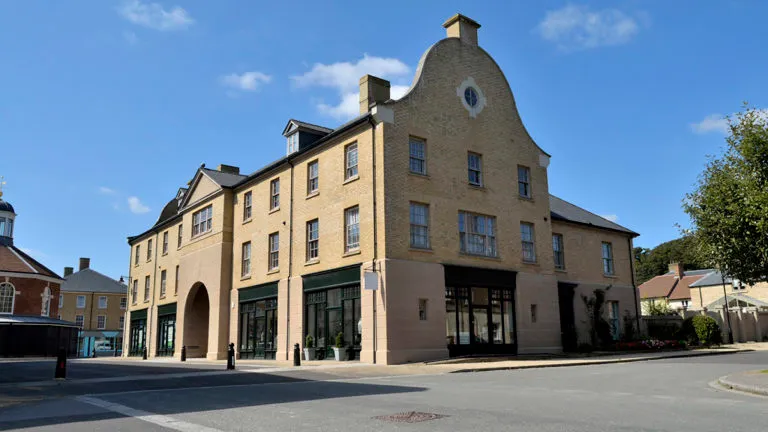The government’s housing paradox
Published: by Angel Strachan

In his first week as Prime Minister, Boris Johnson has already promised to invest in housing – but we need quality as well as quantity.
The new administration is likely to continue with Theresa May’s ambition build at least 300,000 new homes a year; and with 222,000 new homes delivered last year, they are making some progress. But worryingly, it is beginning to look like this drive for high numbers in net additions is impacting on the quality of homes being delivered.
To combat this, the government set up the Building Better, Building Beautiful Commission (BBBBC) to look at how we can start creating new places that people not only want to live in, but want to live next door to.
But if the new government wants to continue to build more homes that both benefit and are loved by local communities, they will need to stop pursing policies that undermine this. Most notably, they must not expand the use of Permitted Development Rights (PDR) to deliver new homes.
What’s wrong with PDR
PDR are an automatic, national grant of planning permission for certain classes of development. PDR enable developers to bypass full, local planning, which means that there’s next to no local accountability over what gets delivered.
Significantly, local authorities cannot enter into section 106 agreements on PDR schemes. This means that they cannot secure any social housing on these schemes and are less likely to be able to secure any infrastructure benefits for communities.
Additionally, although the government wants to improve build design and quality, PDR schemes do not have to meet a local authority’s space standards.
Building Better, Building Beautiful?
In her speech at CIH conference, Theresa May said: ‘I do not accept that, in 2019, we can only have sufficient and affordable housing by compromising on standards, safety, aesthetics, and space.’
That sentiment builds on the work of the BBBBC, which was established with the hope of tackling the poor quality design and build of homes.
In its interim report, the commission argues that beauty is intrinsic to creating good spaces – and that people are more likely to support new housing in their area if it is of good quality and design.
Both this commission and the British Social Attitudes Survey from 2017 also show that people want to be involved in developments. 51% of people stated that having a say in proposals would make them more likely to support new homes in their area. It’s not hard to understand that people like to be listened to when it comes to their neighbourhoods.
But all of this evidence and all of this time and effort spent re-evaluating beauty in design will be undermined if the government continues to expand PDR.
It’s bad enough as it is, with conversions from office-to-residential buildings creating tiny homes that have been found to be unsafe in many places. But if the government continues with proposals to extend PDR to include demolitions of existing structures, allowing them to be rebuilt from scratch without going through the full local planning process, then the situation could get even more dire.
Unfit for Human Habitation
More and more frequently in the news, we are seeing cases of ‘homes’ created through PDR that are tiny, overcrowded and potentially unsafe for residents. In Watford, despite opposition from the Council, a new development of 15 studios and flats, some of which do not have windows, is still going ahead after an appeal from the developer.
Recently, The Times reported that the newly-enacted Homes (Fitness for Human Habitation) Act could be used to improve the quality of PDR units, giving some level of accountability for developers and enforcing an upkeep of standards.
But PDR only started being used in this way in 2013. We should not be relying on this Act to fix fundamental quality and safety issues with housing that was created at most six years ago.
It goes without saying that these houses should have been up to scratch in the first place – which they would have been if they had the proper quality checks from the outset.
If the government is spending money and resources less than a decade later to retroactively fix the issues that have arisen with these properties, then there is clearly something going seriously wrong.
Stopping Permitted Development Rights
Poor quality development comes when people have no say, when the homes delivered don’t suit local people, and when local authorities are unable to plan for the impacts of development on local services. So, basically, everything that happens when new homes are created through PDR, and everything that is avoided when you invest in high-quality social housing.
The previous government undoubtedly did good things to address the housing crisis – especially in the private rented sector. But if the new government continues to be reliant on PDR to deliver new homes, this work will be seriously undermined.
This flawed policy must end.
Instead, with the establishment of a new government must come a commitment to a major social housebuilding programme which can deliver the high quality and genuinely affordable homes that local people want, need, and deserve.
You can read Shelter’s previous blogs on permitted development rights here.